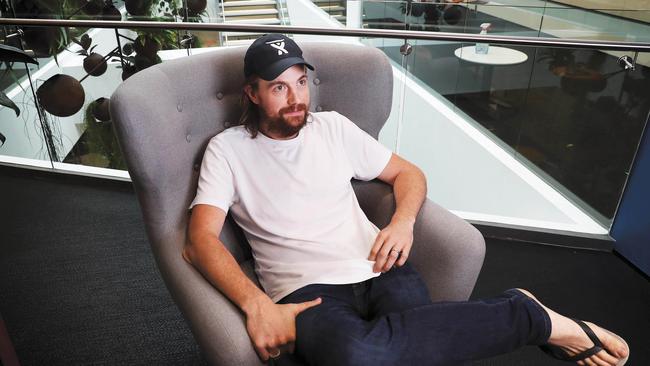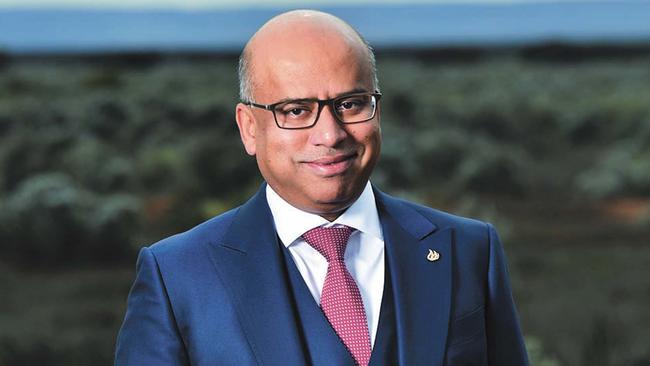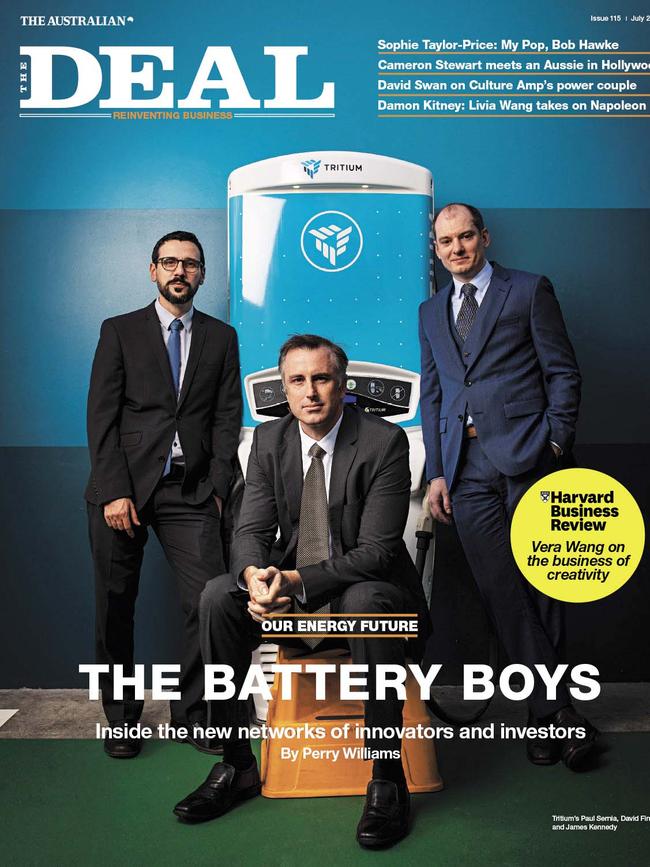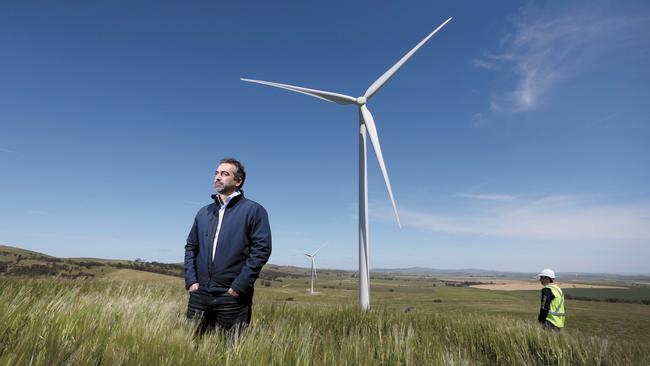Our energy future: The power people
The renewables space is drawing breath after a few frantic years, but it’s buzzing deep down and the investment dollars are flowing.

When British billionaire Sanjeev Gupta arrived in Australia, it didn’t take long to start thinking big. “I looked at the astonishing natural resources in this country,” he says. “And I quickly realised the sky is the limit.”
The industrial tycoon made his name rescuing South Australia’s Whyalla steelworks from administration, but much of his ambition is crafting a future around the power of renewable energy.
Gupta has proposed an audacious plan to build up to 10gigawatts of renewable energy capacity in Australia, the equivalent of adding almost 25 per cent to the nation’s current power-generation capacity. An even more audacious bet could see Gupta become Australia’s first maker of electric vehicles, with production of an “everyman” car being sized up from manufacturing sites in South Australia or Victoria.
“For me it’s simple,” Gupta tells The Deal. “We have solar, wind, hydro and batteries that can transform the power grid in Australia at a very competitive cost. We must embrace that.”
The first plank of Gupta’s vision is the $350 million Cultana solar farm with 780,000 panels to power the Whyalla steelworks as part of a new venture with Chinese energy giant Shanghai Electric. The UK tycoon expects the Shanghai tie-up could deliver slabs of cheap renewable power backed up by storage like batteries and hydro to transition Australia away from coal.

And he’s not alone. Australian tech mogul Mike Cannon-Brookes — not to be outdone — has entered talks to build the world’s largest solar farm in the Northern Territory desert at an eye-watering cost of $20 billion, with the electricity exported to meet a third of Singapore’s annual power needs.
“Biggest island in the world. Biggest sun resource. Biggest wind resource. Biggest solar farm. Biggest cable in the world. Biggest logical vision,” Cannon-Brookes wrote on Twitter. “We should be the biggest renewable export superpower.”
And while it may be the billionaires grabbing the headlines, a small army of developers, financiers and institutional investors has embarked on dozens of smaller projects to put Australia on the map as a clean energy destination.
‘We should be the biggest renewable export superpower.’
Planning is underway on some 43Gw of solar and wind projects in Australia — according to Bloomberg New Energy Finance data — which if delivered to market would nearly double the grid’s current electricity-generating capacity.
The west coast is also in on the action. The ambitious $22billion Asian Renewable Energy Hub, newly backed by investment bank Macquarie, aims to tap wind, solar and hydrogen to supply both the state’s big miners and electricity exports to Asian users.

Projects like those envisaged by Gupta, Cannon-Brookes and a consortium of investors in the Pilbara including experienced operators such as Vestas and CWP Renewables are part of an almost implausibly large pipeline which collectively has the potential to triple the capacity of the nation’s power grid.
Australia will spend $US107 billion ($156 billion) on renewable energy generation by 2030, Bloomberg estimates, split between solar generation for households and business at $US49 billion, large-scale wind and solar at an additional $US58billion, and $US24 billion on new gas-generation capacity.
A glance at actual spending in the market shows boom-like conditions in the last few years.
Australia was the world’s fifth-biggest spender on renewable energy projects last year with investment in large-scale renewable energy doubling in 2018 to $20 billion. Some 38 projects were completed and more than 2.3Gw of new renewable energy capacity entered the Australian market.
One in five Australians now owns rooftop solar, and electricity generated by clean energy accounts for 21 per cent of the overall power mix, Clean Energy Council data shows.
At the end of 2018, 14.8Gw of new generation was under construction, representing a further $24.5 billion in investment over the next three years.
‘If you were the big wind guys coming down to solar, solar looked very cheap and lucrative in terms of development.’
“It’s been nothing short of a frenzy,” says Simon Currie, a top energy lawyer who co-heads Energy Estate, an advisory business to the renewables industry. “But with that there’s been a layer of irrational enthusiasm, and you’re starting to see that shake out in the market now.”
Currie tracks the start of the solar boom to almost three years ago in late 2016 when a slew of smaller developers started to sense the opportunity created by rapid advances in renewables technology, cheap land and easy credit.
“When the rush started, acquisition costs were pretty low compared with other markets and particularly compared with wind. So if you were the big wind guys coming down to solar, solar looked very cheap and lucrative in terms of development. You could go in and do very, very well in a short space of time.”
It marked a rapid turnaround from the Abbott government years when a breakdown in support for the renewable energy target led to an 88 per cent fall in large-scale solar and wind investments to just $240 million in 2014.
Companies including Germany’s Epuron, Australia’s Tilt and CWP Renewables were among the early developers of large-scale renewables projects in Australia, scouting the country for prime rural real estate and laying the foundation for the start of a slow but seismic shift in the electricity grid away from coal.
Backing up their bets on clean energy was a deep and liquid market in offtake deals by utilities wanting to gain exposure to solar and wind. For a big debt lender like Japan’s Mitsubishi UFG, it proved a bounty of activity.
“There was a big wave of projects that were successfully closed in the last couple of years,” Geoff Daley, the bank’s head of Australian structured finance, tells The Deal. “And that was off the back of certainty that led to a lot of retailers wanting to write power purchase agreements to secure their supplies of green electricity. That drove quite a lot of projects. I think we closed 18 projects in 24 months across solar and wind, so it was a very busy period indeed.”
That success — Currie estimates top developers were making 40 times their money back on projects — bred a wave of new entrants, including cowboy operators.
Deals were slapped together at lightning speed, sometimes with little thought given to location of transmission or the ability of contractors to juggle multiple solar farm deals in remote locations.
The collapse of contractor RCR Tomlinson in November 2018 was the biggest casualty, sending a ripple through the renewables community and worrying developers who faced exposure to delays and potential hits to cashflow.
If that wasn’t enough, tougher rules by grid operator AEMO on connecting to the grid and a reduction in so-called marginal loss factors, which determine the prices generators get for their power, have also diminished returns for many operators.
Mitsubishi’s Daley estimates that if developers were enjoying returns of up to 15 per cent in the last few years, they are likely to have slid back to the sort of single-digit returns more commonly associated with long-life infrastructure projects.
“We’ve seen the good times but now some are fighting to get two-figure returns,” Daley says. “Which for the risks some are taking is leading to a pause for thought.”
Still, Energy Estate’s Currie remains bullish and sees plenty of opportunities in the market. EnergyEstate took a 25 per cent stake in the giant 4Gw Walcha wind, solar and pumped hydro project near Armidale in NSW and says interest has morphed from utilities buying renewable power for their own needs to heavy industry looking to boost its exposure.
“We’re not viewed as ideological greenies any more but an integral cog to produce low-cost power,” Currie says. “Otherwise, we’re screwed as an industry. We need as many levers as possible.”
For the government-owned Clean Energy Finance Corporation, which ranks as the second-biggest funding source for large-scale solar and wind projects in Australia, the impact is starting to be felt.
“We have seen somewhat of a downturn particularly in the wind and solar market,” CEFC chief executive Ian Learmonth says. “It’s a combination of the 2020 renewable energy target being built out and therefore investors are pausing a bit to see whether there will be any further incentives.”
Uncertainty also persists over falling long-term contract prices that renewable developers can obtain when they seek to underwrite clean energy projects.
Current wind farm power purchase agreements have fallen by more than 30 per cent in the past five years, according to JP Morgan, with those low prices pushing traditional operators such as Pacific Hydro and Infigen Energy away from project development and into retailing.
Financiers traditionally prefer to see solar and wind projects backed up by power purchase agreements with retailers which derisk the 10- to 15-year payback period to banks.
However, new players entering the market are now having a bet each way with exposure to market pricing and locking in contracts for a portion of supply.

French bank Societe Generale, which worked with renewable developer Neoen to develop the Hornsdale wind farm housing Tesla’s world-beating battery, says the market is evolving quickly.
The long-term 20-year contracts that typified Australia’s renewables sector in 2015 gradually moved to shorter-run 12- or 13-year deals with the big three retailers — AGL Energy, Origin Energy and EnergyAustralia — as order books filled up. Corporates then sought their own power purchase agreements with renewables developers, and some including Telstra are forming their own power “clubs” to source their electricity needs directly.
“It is difficult for developers to procure offtake deals,” says Daniel Mallo, Societe Generale’s head of natural resources and infrastructure.
“A few years ago it was all long-term contracts to sell electricity with utilities. These days it is more difficult. Some are willing to develop a project without knowing where you’re going to sell the power, so you’re selling on the open market, which has more volatility.”
An easing in the renewables boom is also partly being driven by fears of oversupply in the market against a backdrop of coal plants still managing to remain competitive at prices lower than $40/MwH.
Investors “know fossil fuel plant lack a long-term future, but at the same time investment in renewables is constrained by concerns about oversupply until more coal plant exits”, Green Energy Markets director of analysis and advisory Tristan Edis says. “While wind and solar costs have declined to quite low levels we don’t yet see new investments as being attractive at the short-run operating cost of most coal plants.”
But if the challenges are mounting, some of those trends are seen as an inevitable maturing of a sector which remains in its infancy in Australia.
The might of global clean energy heavyweights now moving into Australia — names such as Engie, Enel, Total Eren and Royal Dutch Shell — means while there could be a shake-out of smaller, more exposed developers, the industry collectively will still charge ahead.
Similarly, industry watchers point to new Chinese lenders eyeing the Australian markets and “sleeping giants” like Rabobank, ING and ABN which may flex their muscle.
Still, for the believers like Gupta, the pathway to a bigger renewables future will be driven by economics and market prices.
“Today we have the highest power prices in the world so clearly something is going wrong,” Gupta says. “Australia now has an opportunity to move forward and become a leader in renewables by tapping its natural resources. We want to be at the leading edge of that.”


To join the conversation, please log in. Don't have an account? Register
Join the conversation, you are commenting as Logout